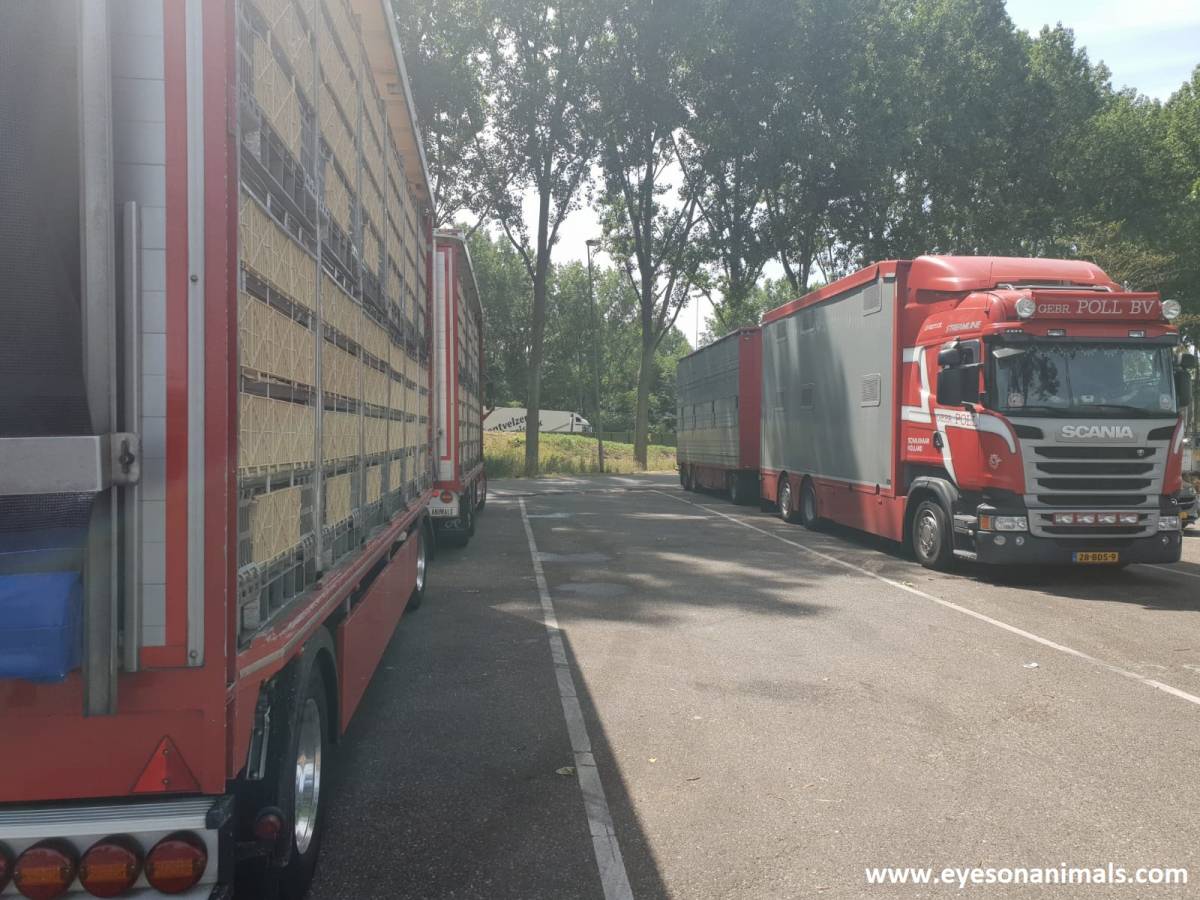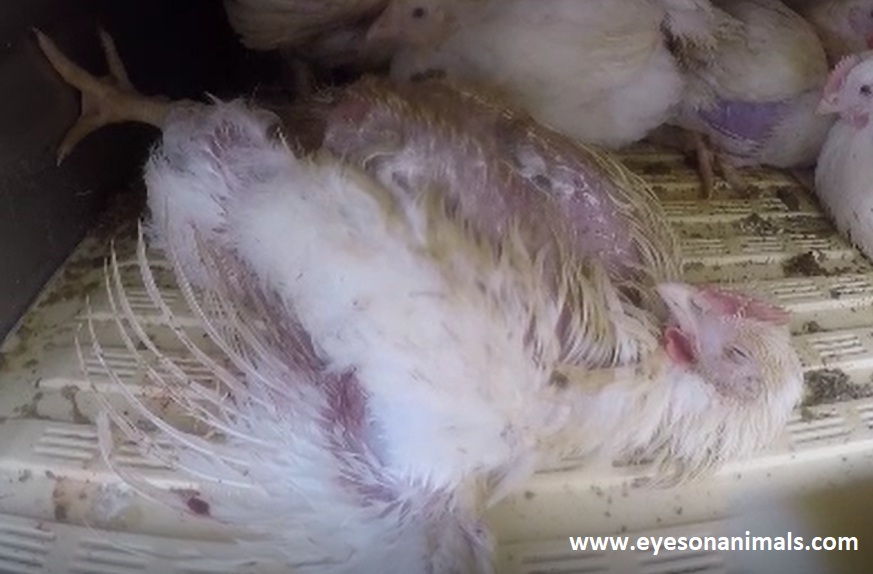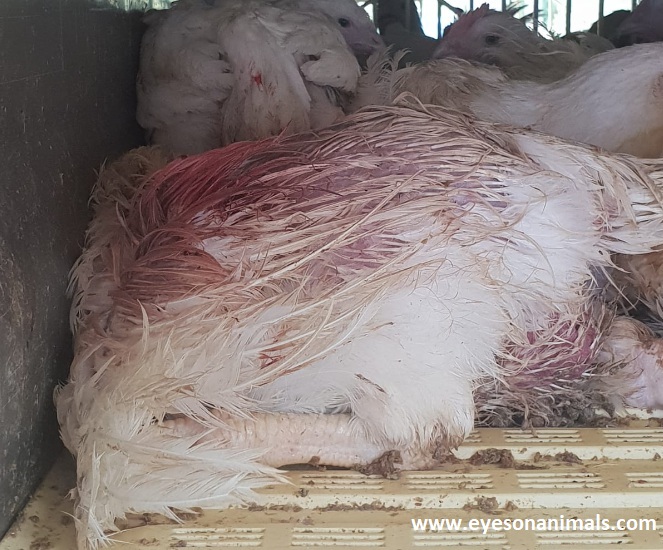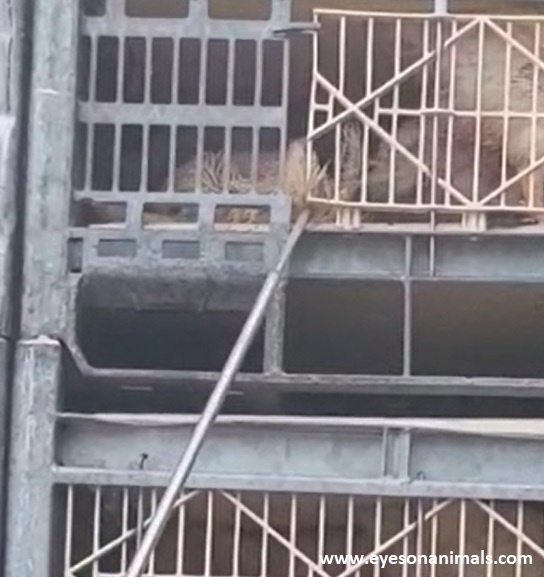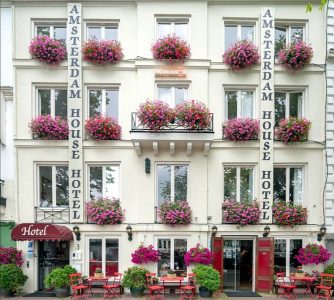Due to the heat, Eyes on Animals checked the welfare of animals in trucks waiting near Clazing poultry slaughterhouse and Boer calf slaughterhouse in the Netherlands. Many slaughterhouses like these, do not have enough space to be able to unload arriving livestock trucks immediately. The animals therefore have to wait on board, often in a parking lot, until the truck can be unloaded.
This waiting can pose a great risk to the animals – there is no air circulating in the parked truck, which causes the temperatures to rise rapidly and animals to suffer from heatstress. In late May, Eyes on Animals sent an urgent letter to dozens of Dutch slaughterhouses and ones abroad asking them to get prepared for the upcoming hot summer days – ultimately to increase the size of their waiting- and unloading areas and, in the meantime, to purchase large mobile ventilators and place them near the trucks and built something to provide shade. Click here to read the letter.
Heat stress
The trucks for Clazing and Boer were parked in an area with trees, so fortunately there was some shade and natural wind. During loading of the broilers, the hot temperature of today was taken into account; they loaded fewer chickens per container than normal. Nevertheless, the chickens in the middle of the truck (where temperatures are usually higher) had accelerated breathing; the first signs of heat stress. Outside the truck it was over 27 degrees Celsius with an air humidity of approximately 44%. Inside the middle of the truck, however, the temperature had risen to just above 30 degrees with an air humidity of over 52%. Especially in the crates above the wheels (which produce heat from driving) it was very hot. The manager of Clazing informed us that their drivers are instructed that as soon as they observe serious signs of heatstress they are to start driving again, to improve the ventilation.
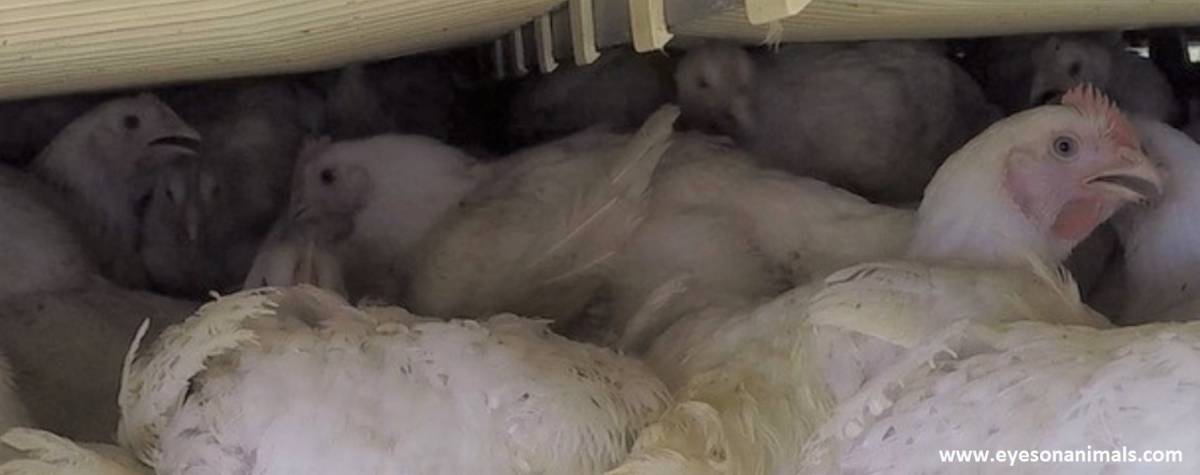
Chickens stuck on their backs and no access doors
In both of the poultry trucks we checked today, we noticed several broilers chickens stuck on their backs; a problem we have encountered many times before. One of the reasons chickens are found stuck on their backs is because of rough loading on the poultry farm. However, it can also happen during transport, for example when chickens fall over when the truck takes a turn in the road or goes over a speed bump. Broiler chickens are so heavy and deformed (due to selective breeding for large breast meat) they cannot stand back up by themselves. Chickens stuck on their backs have difficulties breathing, they suffer and often slowly die. This problem can only be solved by breeding healthier chickens and helping them get back on their feet.
We asked the drivers to place the chickens upright. The drivers were very cooperative, but due to the lack of access doors in the poultry containers, it is not easy to assist a chicken in need. They used a metal pipe to stick through the bars of the containers in order to flip the birds over.
One of the chickens was also injured. Her wing was full of blood and she was breathing fast and could barely move. Sadly, because there was no access door, we couldn’t do anything for her. This is unacceptable, as animals unfit for transport are legally supposed to be assisted and put out of their misery.
For many years, Eyes on Animals has been drawing the attention of authorities, industry and manufacturers of trucks and crates to the importance of having access to animals during transport. More and more livestock trucks now have access doors as a result. For poultry this unfortunately remains an exception – although ability to access is a legal requirement for all animals (Council Regulation (EG) Nr. 1/2005, Annex I, Chapter II, 1.1f). We will ask slaughterhouse Clazing to provide their livestock truck drivers with a pipe made of a softer material, such as plastic, so that the chickens stuck on their backs can at least be placed upright in a more gentle manner. This is just a temporary solution until we manage to convince industry and authorities to get access doors in place.
The manager of Clazing let us know that they cannot get a permit to enlarge the waiting areas of his slaughterhouse, and therefore many birds cannot be unloaded immediately but have to wait on the trucks. He indicated however that they lower the temperature inside their lairage by using fans with water coolers in the walls and having a light-coloured roof. Furthermore, in the summer, they only stack a maximum of two crates on top of each other.
We hope that Clazing slaughter will open their doors to Eyes on Animals, so that we can visit their lairage area and see their heat-reduction measures in action and also brainstorm together on better practice ideas that we can learn about from each-other and spread further.
